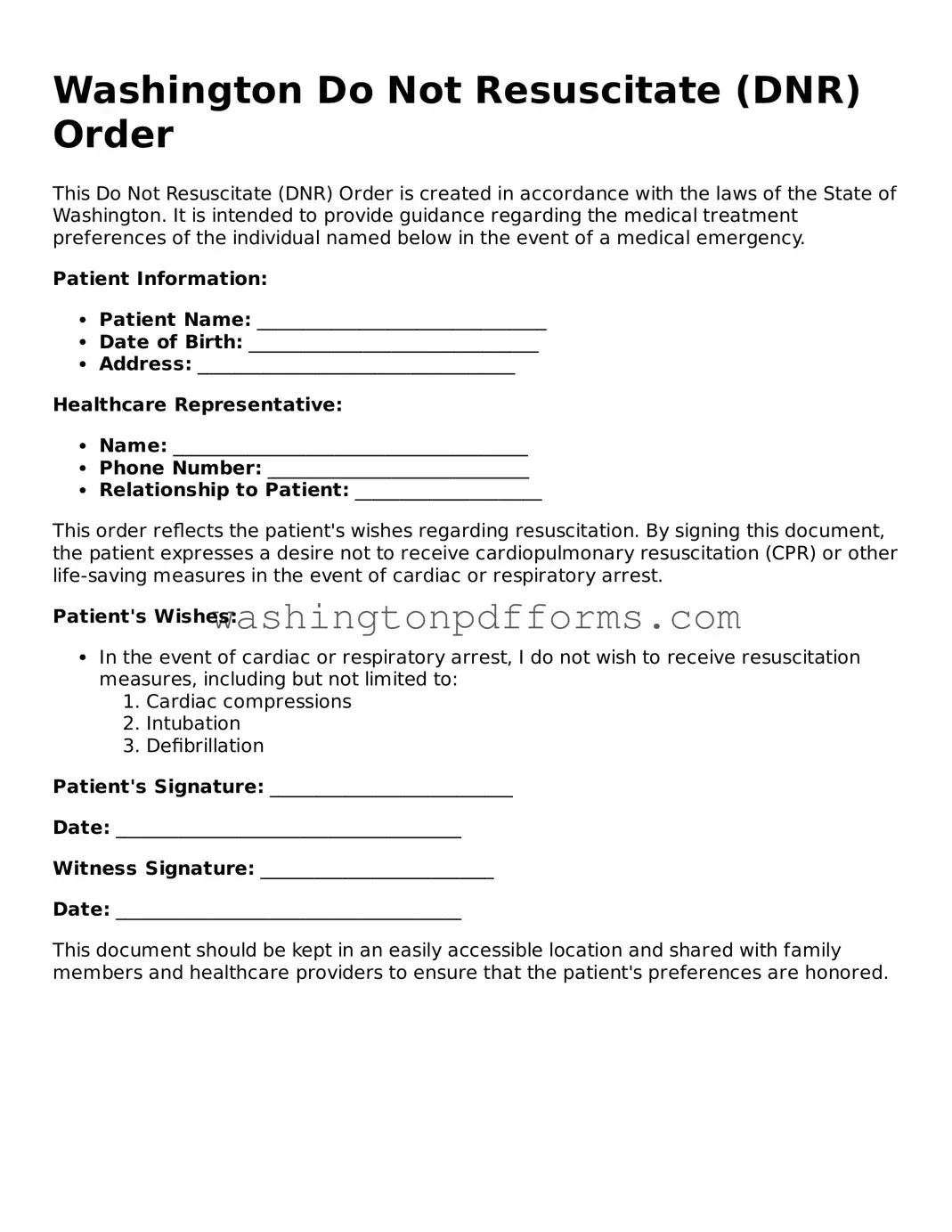Attorney-Approved Washington Do Not Resuscitate Order Template
A Washington Do Not Resuscitate (DNR) Order form is a legal document that allows individuals to refuse cardiopulmonary resuscitation (CPR) and other life-saving measures in the event of a medical emergency. This form is crucial for ensuring that a person's healthcare wishes are respected, particularly when they are unable to communicate those wishes themselves. Understanding the implications and proper use of this form is essential for both patients and healthcare providers.
Make My Do Not Resuscitate Order Online
